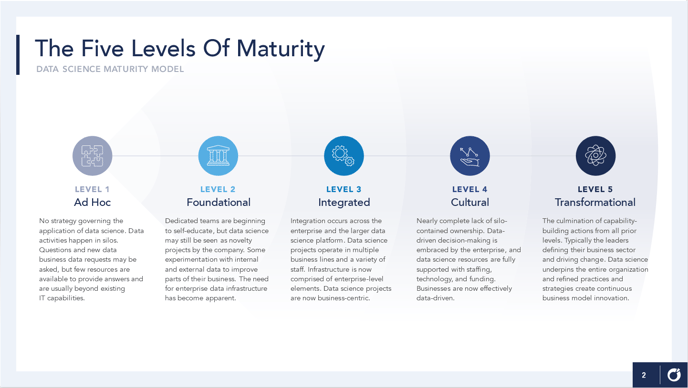Companies should first assess their data science maturity level, then identify and address specific gaps most critical to advancing overall capability.
Multiple data science maturity models are available publicly, from researchers as well as vendors. Arcalea surveyed models across the last decade and created a composite model that preserves critical domains, attributes, and levels most representing a consensus across different practitioners. Regardless of the model chosen, brands can compare attributes across domains, easily identifying maturity gaps. Data science maturity gaps restrain a brand's ability to effectively analyze performance, impeding an organization's further advancement.
At any level, brands should seek to close current level gaps, and execute steps to prepare the company for more advanced levels of data science maturity.
For example, an organization performing at level two, Foundational, likely has decentralized data science with unorganized support, dedicated teams doing analytic work separately, and data experimentation performed in separate silos without common standards. Manual processes and self-serve tools are in use across the business with significant variation, with local data sources tied to business areas. Practitioners at this level should look for use case opportunities to drive data science practices, seek corporate-wide sponsorship to drive standardization and increased maturity across departments, and identify ways to ensure business is centered in the data science model. By defining data science practices in terms of key business drivers or indicators, the sponsors and practitioners will naturally gain interest from high-performing teams and leadership.
Learn more about data science maturity models here.
%20TP.png?height=120&name=arcalealogo-blue-horizontal%20(1)%20TP.png)
